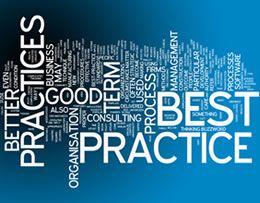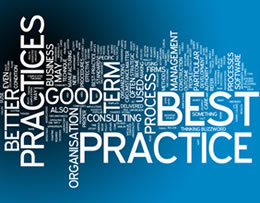From the Sponsor’s Desk – The Nuts for Cheese Project
“Follow your passion, be prepared to work hard and sacrifice, and, above all, don’t let anyone limit your dreams”.
– Donovan Bailey, retired Jamaican-Canadian sprinter, who once held the world record for the 100 metres.
We know that great sponsors make major change initiatives exciting and successful experiences. If we could bottle that “great sponsor” juice, what do you think we’d find in the bottle? Chances are we’d find the ingredients that are present in this month’s case, the Nuts for Cheese project.
In this post, we’ll follow the path one woman took to develop her knowledge and skills and launch and guide a company that, in just three years, is now offering its high quality products through small and large retailers across Canada.
The Situation
In her early teens, Margaret Coons’ love for animals convinced her to adopt a vegan life style. That meant eliminating everything of animal origin from her daily life, including meat, milk, eggs, wool, leather, honey, etc. To her parents’ amazement, she proceeded to learn how to prepare plant-based foods that would complement what was available and prepared in the family kitchen and replace the meat and animal products that were consumed by the other members of the family.
Margaret continued her vegan lifestyle through her secondary and post-secondary school years, graduating with a degree in English Language and Literature from Western University in London, Ontario.
After graduation, she worked as a chef in a local vegan restaurant preparing plant-based foods. In the evenings, after work, she rented the restaurant’s kitchen to experiment and learn, developing her own recipes. They would often appear on the restaurant’s menu in subsequent days, giving Margaret valuable customer feedback on her creations.
In addition to the night time experimentation, Margaret completed Rouxbe’s Plant-Based Professional Certification, appeared on London daytime television with creative vegan cooking demonstrations and offered cooking lessons and classes at local fairs. She also provided private catering and helped other culinary establishments create vegan recipes. All this while working as a chef at the vegan restaurant. But her love and her specialty was creating cashew cheeses. She started her business on a small scale, offering her products at local farmers’ markets and contributing her wares at a local vegan food bank.
In 2016, the local vegan restaurant closed its doors. Margaret had a decision to make, and she made it – to go full time and full bore with her own company, designing, making and selling cashew based cheeses. And so she launched the Nuts for Cheese project.
The Goal
Margaret’s vison for Nuts for Cheese: To be the #1 selling, high quality, great tasting vegan cheese that people love.
The Project
Margaret’s initial challenge on hearing about the vegan restaurant’s closure was to find a new location and hire and train staff to help her get back up and running. She located and contracted for a small 1200 square foot space, hired four staff and was back producing her cashew based cheeses in short order, serving about 25 retailers and continuing to cover local farmers’ markets.
A year later the company landed Farm Boy as a client and moved to a larger production facility to serve the orders from a growing customer base. Two more moves were required in the following years as demand continued to grow. Nuts for Cheese now operates out of a newly acquired 11,000 square foot facility. The number of staff has also grown, currently standing at 23 and counting.
Margaret admits that she became an entrepreneur by accident. With little formal business training, she had to learn on the go. She has enjoyed the guidance of mentors along the way, including her current mentor who offers expertise on the grocery business, quality control and supply chain management. As the company is self-funded, she has had to master and aggressively manage cash flow, the supply chains, hiring and management of a growing workforce, putting an organization structure in place and, of course, the facilities to house her operations.
Margaret’s recipes for her cheeses are a reflection of the dedication and precision she brings to all aspects of the company’s operations. She starts with organic cashews which are soaked in filtered water for 24 hours to create the base cashew milk. The milk is then fermented for 24 to 36 hours using yeast cultures created in house. The fermented milk is then seasoned and aged to create the company’s unique offerings including Un-Brie-Lievable, Super Blue, Chipotle Chedder, Red Rind and Smokey Artichoke and Herb. The company also creates all its own seasonings using all organic sources.
Margaret’s passion for quality is reflected in her hiring practices. To date, she has interviewed every candidate and participated in every hiring decision. Her primary hiring criteria are personality match, values match, then skills. The use of only organic products and the creation and operation of rigorous quality control practices at each stage of the supply chain simply reinforces that quality ethic. The company has applied for and is currently waiting on formal organic certification for their products.
The Results
In the three years since its launch, Nuts for Cheese has tripled revenue every year. The number of staff has grown from four people to twenty-three. It has just moved into a new 11,000 square foot production facility to supply its products to retailers across Canada, including major grocery chains. And the firm was just named one of the top 14 employers in London. Not bad for an accidental entrepreneur!
How a Great Leader Succeeded
Margaret’s journey with Nuts for Cheese is a wonderful success story, but it’s also a wonderful roadmap for managing any kind of change. The values and tenacity she brings to her job as CEO are the same qualities and attributes that make great sponsors, successful projects and wonderful experiences in any field. That includes:
1. Knowledge – Margaret built her vegan knowledge from her mid-teens on, studying, experimenting, sharing and soliciting feedback iteratively and incrementally. From her early ventures into a vegan diet, to the restaurant’s kitchen, to her after hours experimentation and creation, to her formal education, Margaret acquired the knowledge to succeed in her Nuts for Cheese adventure and openly shared that wisdom.
2. Commitment and passion – Take a look at Margaret’s goals for her company. #1 seller. High quality. Great tasting. People love it. Take a look at the recipe. All organic with quality control processes to ensure that’s the case. Seasonings and yeast cultures created in house. Take a look at who and how she hires. Personality, values, then skills. Involvement in every interview and hiring decision. Add Margaret’s regular 80 hour weeks to that mix and it’s evident that passion and commitment are drivers of the company’s success.
3. Collaboration – Perhaps more than anything, collaboration characterizes Margaret and her company. From her early years with her family, to the restaurant experience, to her engagement and work with mentors, to her relationship with her staff, customers and communities, collaboration has been the hallmark of her approach to life and business. That’s how the name for the company was developed – brainstorming with friends and colleagues.
4. Sharing core values – Margaret hires people who share the core values she wants for the company. That reinforces and builds a collegiality based on customers, quality and success. The company’s selection as a top place to work is evidence of the strength of that sharing.
5. Lessons learned – Without a business background, Margaret and her staff have acquired and shared the operational, supply chain, quality control, marketing, distribution and product development skills and insights needed to grow the company and provide their customers across Canada with tasty, quality products.
In his article The Speed Trap – When Taking Your Time (Really) Matters, Tom Peters states: “An organization is nothing more and nothing less than people (our folks) serving people (our customers and communities).” It is evident Margaret got that right. She “owns” her Nuts for Cheese project lock, stock and barrel. It’s also apparent that her staff shares her ownership. That’s the force multiplier. The whole is significantly greater than the sum of the parts. If you are a project or change manager, imagine what your projects would be like if your sponsors, key stakeholders and project staff exhibited the characteristics described above.
So here’s a suggestion: use these points to evaluate your sponsors, key stakeholders and project staff. If there are gaps and deficiencies, include activities in your project plans to build collective capabilities and close the gaps. Also remember, use Project Pre-Check’s three building blocks covering the key stakeholder group, the decision management process and the Decision Framework (including key stakeholder assessments) right up front so you don’t overlook these key success factors.
Finally, thanks to everyone who has willingly shared their experiences for presentation on this blog. Everyone benefits. First-time contributors get a copy of one of my books. Readers get insights they can apply to their own unique circumstances. So, if you have a project experience, good, bad and everything in between, send me the details and we’ll chat. I’ll write it up and, when you’re happy with the results, Project Times will post it so others can learn from your experiences.


 “Those who cannot remember the past are condemned to repeat it”.
“Those who cannot remember the past are condemned to repeat it”.